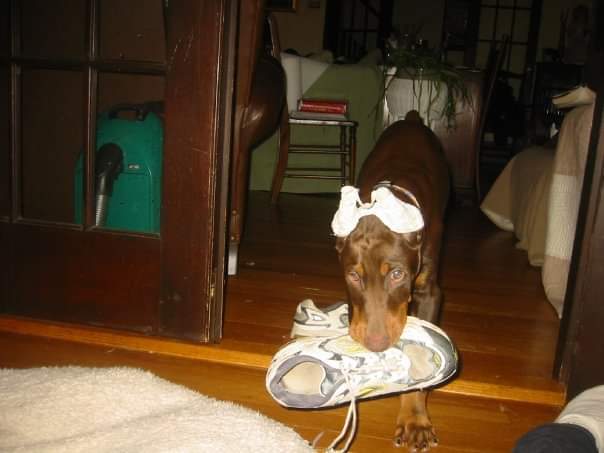- The activity or item that eventually or immediately drives your dog to do it more or want to engage with you more.
- This is something the dog is going to eventually be clear about. You can experiment with to find it and start the process, but ultimately you need to pay attention to whether it is truly motivating your dog OR do you just expect it would motivate your dog.
- Experiment with your dog. Have fun and see what they like. Do they chase the ball? (I warn you this may not be immediate) Do they like to tug on stuff with you? Do they love to chase the flirt pole object? Do they bring things back to you?
- Observe your dog in their free time, what are they drawn too. Do they love to chase, pull, steal stuff?
- Notice what your dog gets you to participate with them in.
- Try new things with your dog on occasion. Things like tricks, nose work (which is super simple and not as intimidating as you might think), safe agility type things, or a game of "find it".
- What environments to they enjoy most? Are they dogs that love the woods and to give critters chase? Are they dogs that love a good stroll down a city street as greeters?
- If they are old enough (usually two or more years old) and healthy enough, do they enjoy jogging, biking, or camping with you? Not something you can necessarily use as I will describe before, but definitely something to work on and polish for easy adventures. For the dog the reward is going to be the activity.
- Note that not ALL of your dog's things they enjoy are going to help you, but most definitely will.
- Like us, dogs need a bit of fun in their life. We have hobbies, family activities, relaxation activities that we enjoy, which make our life more enjoyable. Dogs need that in their day as well in some form. Integrating that in training, makes training seem more like play to them and us.
- The tug and fetch games are something that can be used for obedience and for perception modification. I should say, there are ways to do this wrong and make the situation worse. When you learn the rules and teach them to your canine buddy, then these can be used to train impulse control. In this instance, impulse control keeps the game going. If the dog values the game, they will adhere to the rules of the game as they have been taught. Done well, the reward really becomes the time and interaction with you and less about the toys used.
- Activities and sports are great bonding practice and events that you as a team accomplish. If your dog loves those, they will work with you on their performance to improve (and don't forget your performance must improve as well).
- When something enjoyable is married to an environment that is stressful (not too much just enough), then you can change your dog's perception of that environment by introducing something that is their bliss in that environment. It has to be controlled and safe. It can also go pretty slowly, but the improvement can come and be lasting. If you have lived with a dog that lives in the state of fear, you know how important that can be.
- Finding your dog's bliss and participating in it with them, can just bring more to your relationship and bond with your canine companion.
- If your dog has a purpose in their activity, they are going to work harder to perform and finish the task.
- Roll the ball across the room or gently in the yard first.
- If doing tug, just gentle little tugs on it.
- Let them get the item. Pet and encourage them when the have the item rather than trying to snatch it away.
- Make hide/seek, find, or nose work games very easy at first. Encourage their success at the easy stuff and then slowly build it up.
- Just like in our engagement blog, keep the games and activities short at first and build up the time. 5 minutes may even be too long on the first day.
Remember why you got your dog, and enjoy them. This will help your canine team become a lot closer.

 RSS Feed
RSS Feed